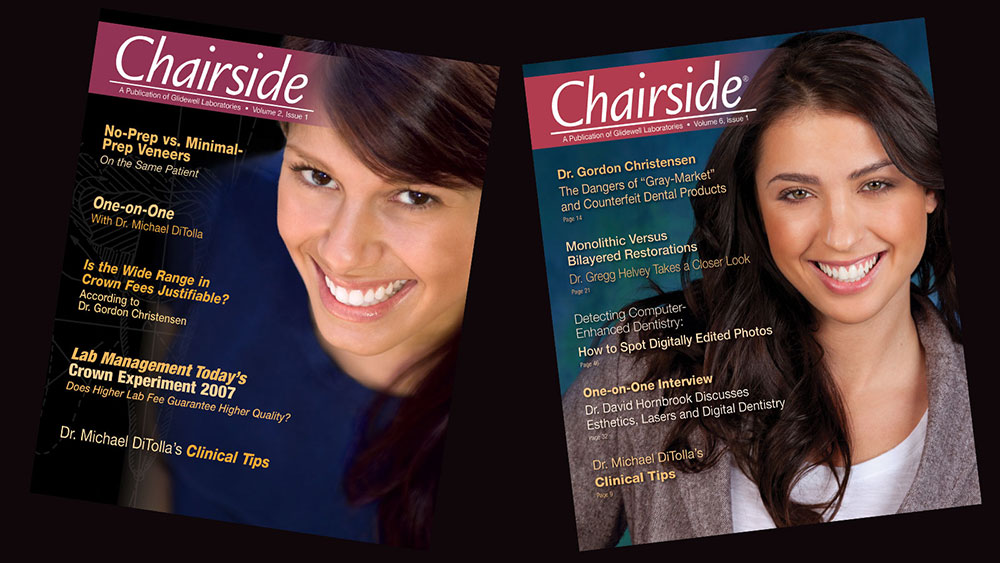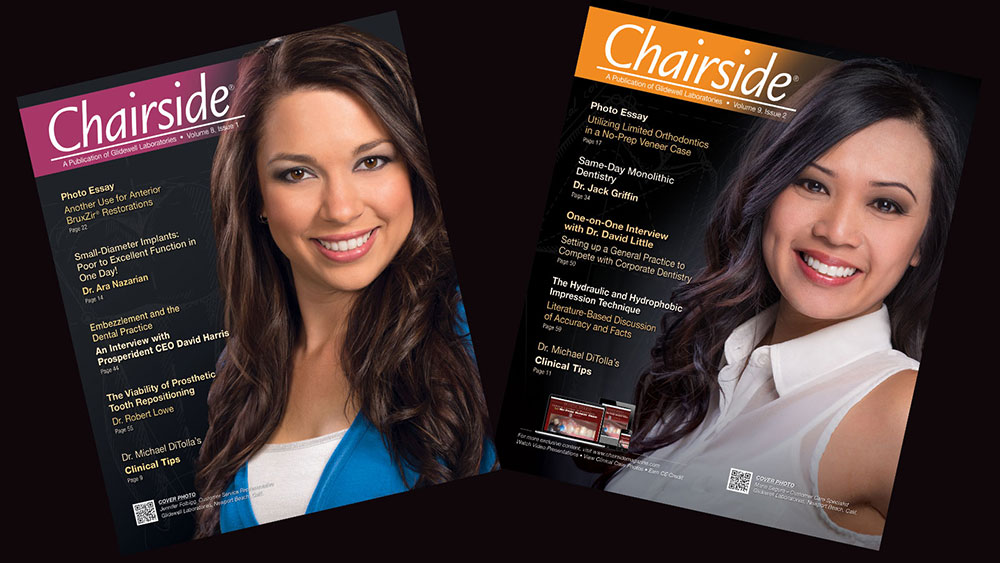Chairside® Magazine: A Retrospective
As we move into 2015, Chairside® magazine is entering its 10th year of publication.
My mission for the magazine has been simple: to offer tips and techniques from my unique perspective as a dentist who practices inside the nation’s largest laboratory. As a self-professed average dentist, seeing my somewhat embarrassing preps and impressions on the big screen 14 years ago forced me to learn how to do better dentistry using the same average hands I’ve always been stuck with. I wanted to share the perspectives of dentists, consultants and mentors who helped me get above-average results, with the goal of doing the same for others. Looking back on the magazine’s history and hearing from many of you, I feel like we’ve accomplished that goal more often than not.
In the decade since the first issue of Chairside was published, an extraordinary amount of change has taken place in our once low-tech industry. The biggest leap has been the rapid advancement of restorative materials. All-ceramics have largely toppled PFMs, ending their half-century reign as the go-to solution. In 2007, PFMs accounted for 65% of the crowns we made at Glidewell Laboratories. Today, they’re under 10%. Such an extreme shift in prescribing habits suggests that these new monolithic materials are passing muster for general dentists. Today, dentists are finally able to provide a solution that satisfies both their requirements for strength and the esthetic needs of their patients.

CAD/CAM technology has swept across the industry. I’ve seen firsthand how digital tools are helping both doctors and labs treatment plan and design restorations with more precision and speed than most of us ever thought possible. While intraoral chairside scanners aren’t yet the norm in offices nationwide, you’d be hard-pressed to find a dentist who hasn’t at least considered using the technology. Prices for digital radiography have dropped substantially, and hopefully cone-beam scanners will soon follow suit, helping dentists visualize cases in astonishing detail. Guided surgery has given many dentists, including me, the confidence they need to place their first implant. These technologies are no longer in their infancy and, as they become more affordable, are well on their way to becoming the norm.
Ten years ago, we were still trying to figure out how to integrate these tools into our daily workflow. Our only successful attempt at the time was the digital design of PFM copings. Now, all of our fixed restorations have at least one substantial phase of CAD/CAM technology involved in their production, with most of them completely manufactured using digital processes. While it’s true that a majority of doctors continue to favor conventional VPS impressions, once we pour the models they are all scanned and entered into a digital workflow.
For the last several years, the buzzwords for improving your practice have been “social media.” Dentists are more or less required to have a web presence today to maintain relevancy. Many feel compelled to update Facebook pages or Twitter accounts daily. Not many dentists entered dental school thinking they would have to worry about negative Yelp reviews from dissatisfied patients. Internet-savvy patients can now tell the world how their visit to your office went, and, if it didn’t go exactly as they hoped, you might end up seeing a heated review that blames you by name for “what went wrong.” For those dentists who just want to focus on delivering quality restorative dentistry, social media is an exhausting new addition.

In short, the last 10 years have produced more change than any decade I have witnessed. New technologies, protocols and product innovations are hitting dentists from every angle, and Chairside will continue to do its best to explain how average practitioners (and their patients) can benefit from these changes. We’ll explore technology that can improve the clinical aspects of your practice, and feature practice-management professionals who offer advice on which advancements might significantly help your bottom line. Our aim is not to spotlight change simply for change’s sake, but to advocate for clinically tested and lab-proven techniques and technologies, with the goal of improving quality and satisfaction for both doctor and patient.
While I am extremely grateful to our guest contributors, I’d also like to thank the Chairside team. When we started back in 2006, we had a staff of just 11, with most employees taking on multiple roles. We now have a staff of more than 30 individuals carefully putting together each issue, including dedicated photographers, videographers, illustrators, writers, project coordinators and graphic designers, as well as a web team that carefully transitions all of that work into a digital-friendly format.

You might not be reading every article word for word, but I’m hoping that our clinical photos are attractive enough to hold your interest. Blurry, out-of-focus photos are no longer acceptable in dentistry when the average cell phone has a camera chip more powerful than a 1960s NASA supercomputer. Our photographers, videographers and illustrators do their best to help present cases and products with clinical integrity. My goal has been to share with you what I see in the lab and the operatory in the highest available quality.
Finally, all of this would be impossible without Jim Glidewell, who truly believes in giving back to the dental community that has given him so much. He’s provided all of the resources, tools, equipment and technologies needed to send out more than 125,000 copies of each issue to every dentist across the United States. Publishing a magazine like this brings in far fewer new customers than if that money was spent directly on full-page ads in dental journals. I want to thank Jim for his commitment to helping dentists improve their practices through Chairside magazine’s common-sense approach to dentistry.
The team at Chairside wants to sincerely thank you for reading over the last nine volumes. We hope that you’ve enjoyed our publication and perhaps even learned a thing or two.


